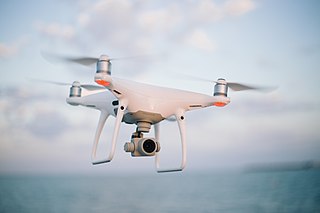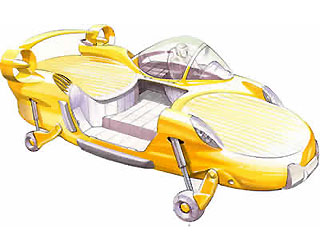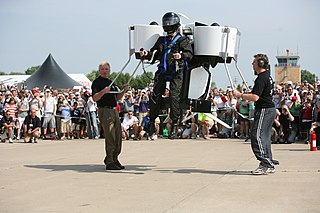
The Mil Mi-6, given the article number izdeliye 50 and company designation V-6, is a Soviet/Russian heavy transport helicopter that was designed by the Mil design bureau. It was built in large numbers for both military and civil use and was the largest helicopter in production until the Mil Mi-26 was put in production in 1980.

The Kamov Ka-26 is a Soviet light utility helicopter with co-axial rotors.

The Kamov Ka-15 was a Soviet two-seat utility helicopter with coaxial rotors, which first flew on 14 April 1952 at the hands of test pilot D. K. Yefremov. It was the world's first mass-produced coaxial helicopter. State acceptance trials were completed in 1955, and the helicopter entered production the following year at aircraft factory No. 99 in Ulan-Ude. It was a precursor to the Ka-18 and was fitted with the M-14 engine. It was primarily used for bush patrol, agricultural purposes and fishery control.

The Hughes XH-17 "Flying Crane" was the first helicopter project for the helicopter division of Hughes Aircraft Company. The XH-17, which had a two-bladed main rotor system with a diameter of 134 feet, still holds the world record for flying with the largest rotor system. It was capable of flying at a gross weight of more than 50,000 pounds (23,000 kg), but proved too inefficient and cumbersome to be mass-produced beyond the prototype unit.

A quadcopter or quadrotor is a type of helicopter that has four rotors.

An electric aircraft is an aircraft powered by electricity. Electric aircraft are seen as a way to reduce the environmental effects of aviation, providing zero emissions and quieter flights. Electricity may be supplied by a variety of methods, the most common being batteries. Most have electric motors driving propellers or turbines.

The Sikorsky S-69 is an American experimental co-axial compound helicopter developed by Sikorsky Aircraft as the demonstrator of the Advancing Blade Concept (ABC) under United States Army and NASA funding.

The Sikorsky X2 is an experimental high-speed compound helicopter with coaxial rotors, developed by Sikorsky Aircraft, that made its first flight in 2008 and was officially retired in 2011.

The Urban Aeronautics X-Hawk is a proposed flying car designed by Rafi Yoeli in Yavne, Israel, being built by Metro Skyways Ltd., a subsidiary of Yoeli's privately held company, Urban Aeronautics. The firm claims to have flown the car to a height of 90 cm (3 ft), and that greater heights are possible. The X-Hawk and its smaller unmanned version, the Tactical Robotics Cormorant, would be used in search and rescue operations where a helicopter would be useless, or at least very dangerous, such as evacuating people from the upper stories of burning buildings, or delivering and extracting police and soldiers while very close to structures, narrow streets, and confined spaces, with a projected size similar to that of a large van.

The Martin Jetpack was a single-person aircraft under development. Despite its name, it did not use a jet pack as such, but ducted fans for lift. Martin Aircraft Company of New Zealand developed it, and unveiled it at the Experimental Aircraft Association's 2008 AirVenture in Oshkosh, Wisconsin, Wisconsin, US. The US Federal Aviation Administration classified it as an experimental ultralight airplane.
The GEN H-4 is a Japanese helicopter under development by GEN Corporation of Nagano. The aircraft is intended to be supplied as a kit for amateur construction.

Pascal Chrétien is a French-Australian commercial helicopter pilot and engineer with degrees in electronics and aerospace who designed, built and test flew the world’s first crewed electric helicopter the Solution F/Chretien Helicopter on 12 August 2011. The helicopter, built for the French company Solution F, set a Guinness World Record and received the IDTechEx Electric Vehicles Land Sea & Air award. The prototype is on permanent display at the Musée de l'air et de l'espace in Paris le Bourget, France.

The Vertical Take-Off and Landing Experimental Aircraft program is an American research project sponsored by the Defense Advanced Research Projects Agency (DARPA). The goal of the program is to demonstrate a VTOL aircraft design that can take off vertically and efficiently hover, while flying faster than conventional rotorcraft. There have been many previous attempts, most of them unsuccessful.

The Eagle's Perch was an American helicopter that was designed by the Nolan brothers and produced by Eagle's Perch Inc. of Carrollton, Virginia. Now out of production, when it was available the aircraft was supplied as a kit for amateur construction.

The Hoppi-Copter was a functional backpack helicopter developed by the American company Hoppi-Copters Inc. founded by Horace T. Pentecost in the 1940s. The original Hoppi-Copter consisted of two contra-rotating rotors on a pole attached to a motorized backpack. Although it was capable of flight, it was extremely hard to control.

The VRT 500 is a project of a light helicopter with a coaxial rotor developed by VR-Technologies (VRT), a subsidiary of Russian Helicopters.
The Trixy Trixformer is an Austrian roadable aircraft autogyro/electric motorcycle designed and produced by Trixy Aviation Products of Dornbirn, introduced in 2014. The vehicle is supplied complete and ready-to-fly.
The Arrow Coax Livella Uno is a German helicopter under development by Arrow Coax Ultra Light Helicopter of Hornhausen and introduced at the AERO Friedrichshafen airshow in 2015. The aircraft is intended to be supplied as a kit for amateur construction.

The Rotorschmiede VA115 is a German helicopter, designed and produced by Rotorschmiede GmbH of Munich, introduced at the AERO Friedrichshafen airshow in 2015. The aircraft is supplied complete and ready-to-fly.

The Volocopter 2X is a German two-seat, optionally-piloted, multirotor eVTOL aircraft. The personal air vehicle was designed and produced by Volocopter GmbH of Bruchsal, and first introduced at the AERO Friedrichshafen airshow in 2017. The aircraft is sold complete and ready-to-fly. Volocopter was formerly known as E-volo.



















